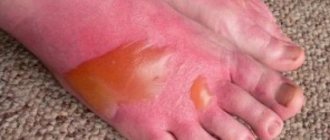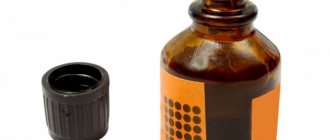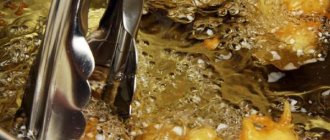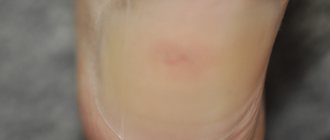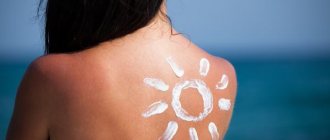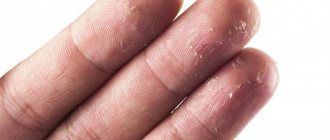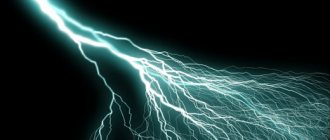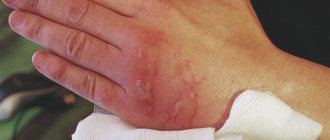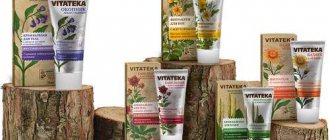Finger burns are a painful injury that often occurs at home. The damaged skin burns and is very painful. Patients who have suffered burns to their hands require emergency first aid and proper treatment. People who know what to do if a finger is burned quickly cope with the problem. In case of mild thermal or chemical injuries, they get rid of the burn with the help of pharmaceutical and folk remedies. For severe burns, seek help from a doctor.
Types of burns
The classification of thermal and chemical burns on the fingers depends on the depth and size of the lesion. There are 4 degrees of burn injuries:
- I degree. Slight damage to the skin occurs. Redness appears on the skin. The affected area burns, it is sore and painful.
- II degree. Bubbles filled with liquid appear on the burned area. Damaged skin hurts a lot.
- III degree. Tissue necrosis develops. A scab forms on the surface of the skin.
- IV degree. In severe burns, soft tissues die and muscles and bones are severely damaged.
Treatments for burns vary. First- and second-degree finger burns can be treated at home. Severe grades III and IV injuries on the hands are treated in an inpatient setting.
Seek medical help if blisters form on your fingers. It is not recommended to pop blisters yourself. Sometimes when piercing the wounds become infected, which leads to serious complications. They go to see a doctor when the burnt area becomes infected. After the infection penetrates, the patient's temperature rises and he suffers from pain. The skin around the injury turns red, the wound swells, and pyogenic accumulations appear in it.
Types and degrees of skin damage
A finger burn is characterized by one of four degrees of damage:
- Slight damage to the upper layers of the skin, the injury site becomes red and swollen.
- Blisters appear.
- Deep trauma with tissue damage.
- Damaged skin and muscles become charred.
All burns are divided into groups:
- Thermal origin. Appear due to exposure to boiling water, steam, hot and heated objects.
- Chemical origin. They are caused by exposure to acids and alkalis.
- Radiation. They arise as a result of the influence of ultraviolet or radiation radiation.
In everyday life, thermal damage can occur from touching a hot surface, exposure to steam and boiling water. Chemical damage is caused by some cleaning products.
First aid
In everyday life, it is easy to get burned using any household appliance that can heat up to critical temperatures. The cause of a burn can be an iron, stove, oven, frying pan, or curling iron. Fingers often get burned when working with aggressive chemicals.
After injury, you must immediately act according to the following algorithm:
- The damaged finger is immersed in cool water. Cool it for 15-30 minutes. The cold prevents damage from spreading across the surface of the skin and affecting the deeper layers.
- Ice is used to cool the burn surface. An ice pack is wrapped in a towel and applied to the burned area for 20-30 minutes. It eliminates swelling and reduces pain.
- If a chemical reagent comes into contact with the skin, wash the affected area thoroughly under running water. Then acidic reagents are neutralized with a solution of baking soda, and alkaline ones with table vinegar or boric acid.
- Disinfect the wound with an antiseptic weak pink solution of potassium permanganate or Furacilin (1 tablet per glass of water).
- Apply a sterile bandage to the burned finger. It protects against infection.
- Severe pain is relieved with analgesics.
Why are finger burns dangerous?
Any trauma to the skin can lead to the development of a secondary bacterial infection. A 1st or 2nd degree burn to your fingers can be harmless if you follow wound care rules. If you puncture a burn blister or neglect antiseptic treatment, there is a risk of the situation leading to infection and subsequent amputation. Burns of 3-4 degrees lead to the same situation if not treated correctly.
Possible complications include nail splitting, partial removal, or a broken plate. These injuries are painful and may also require removal of the nail, which will affect the aesthetics of the appearance.
A seemingly harmless injury can lead to serious complications. Compliance with basic safety measures and rules for caring for burns will reduce the risk of complications to a minimum.
Drug treatment
The burn is treated with medications after cooling. For this use:
- Pharmacy gel dressings. They suppress pain and speed up healing.
- Anti-burn medications: sea buckthorn oil, Panthenol spray, Bepanten Plus cream, Olazol, Radevit ointment.
It doesn’t matter what you burn your finger with: boiling water, hot milk, steam, open fire or oil, in case of damage, no matter what they caused, first aid and treatment are carried out according to the same scheme.
Features of damage
Iron burns are a common injury that can occur in domestic and industrial environments. It occurs upon contact with a hot or heated surface of a metal product. Usually the damage is not serious. When in contact with hot metal, a person quickly withdraws his hand or other part of the body. For this reason, he can only receive a 1st or 2nd degree burn.
When a thermal burn occurs on an iron surface, the following symptoms appear:
- redness on the surface of the skin;
- At first, there may be an unpleasant burning sensation and pain in the damaged area;
- with increased sensitivity, blisters may appear;
- sometimes large and deep blisters with clear liquid may form, with redness around them;
- The first few days there is pain and discomfort.
Important! Iron burns can be treated quickly and easily. But it is necessary to start therapy as soon as possible; the victim must be given first aid immediately after receiving an injury.
Security measures
If your finger is burned, do not do the following:
- Cool the wound with ice. Direct contact with it may result in tissue frostbite.
- Treat the burn with alcohol-based antiseptics (brilliant, iodine) and toothpaste.
- Lubricate open damage with greasy or oily products.
- Apply a tight bandage.
- Protect the wound with adhesive tape.
It is necessary to carefully handle skin with blisters. Maintaining the integrity of the blisters is a prerequisite for safety. They prevent pathogens from entering the wound.
How to determine if a burn wound is infected
Very often, burn injuries to the fingers are accompanied by the formation of blisters, which are the main causes of infection and the development of inflammatory processes. The risks of such phenomena are especially high in cases of intentional or accidental opening of bubbles.
If an infection is associated with the injury, this can be determined by the following signs:
- the victim feels throbbing or acute pain, the intensity of which increases every day;
- increased body temperature;
- severe redness of the skin, which does not go away even after applying special antiseptics;
- observation of purulent discharge.
In most cases, infectious processes occur due to dirt, dust and other contaminants getting into wounds. That is why it is impossible to open the bubbles prematurely and on your own.
Traditional treatment methods
Folk remedies help cure finger burns.
Herbal extracts are not effective if blisters form on the burned area. The blister will not allow them to penetrate deep into the tissue.
To relieve signs of a burn and prevent wound infection, use:
- Woodlice juice. The juice is squeezed out of the grass and applied to the affected skin. Home remedy relieves pain and speeds up healing.
- Boiled onions alleviate the condition and speed up recovery. The onion along with the husk is placed in a saucepan, filled with water, and cooked until tender. Remove the head from the broth, cool, and peel. The pulp is turned into pulp. Tied to the sore spot.
- Calendula oil helps treat burned skin . It has bactericidal and anti-inflammatory effects. The wound heals quickly, the product prevents the formation of scars. A napkin soaked in oil is wrapped around the finger and secured with a bandage. Do two dressings a day. The product should not be used for first aid for burns. It is used when the skin is cool.
- At home, burnt fingers are treated with veronica decoction. Place 20 g of herb in 250 ml of boiling water and filter after cooling. You can use it to make lotions and wash wounds.
- Compresses made from raw potatoes or pumpkin. To make the applique, vegetables are crushed into a paste. Place the product on a napkin and tie it to your finger. The dressing is changed as soon as the paste warms up.
- Burns are successfully treated with cabbage leaves. Take the white of a fresh chicken egg and add to it an equal amount of pulp obtained from a cabbage leaf. Apply to the burn.
- Cabbage leaves are boiled in milk and pureed. Mix with rye flour to form a flatbread. Fixed on the affected area.
- If your hand and fingers are burned, apply lotions with eucalyptus extract. Place 10 g of herb in 250 ml of water, bring to a boil, and simmer for 30 minutes. Filter, moisten a napkin, apply to the lesion. Change as it warms up (every 5-10 minutes) for an hour. Lotions cool burned skin and relieve discomfort. Do two procedures a day.
- Roses are used to treat 1st and 2nd degree burns. Freshly picked petals are applied to the wound and secured with a bandage. The application is removed when the petals are completely dry.
- Lotions with herbal extracts. A decoction is prepared from clover inflorescences, rose hips, and coltsfoot leaves. Brew a teaspoon of herbs in 200 ml of hot water. After 30 minutes, filter, soak a cloth with the product, and apply to the damaged skin. The application is changed as soon as the napkin warms up. The duration of the procedure is 1 hour. Lotions are made twice a day. Herbal extracts quickly heal burns, relieve pain, and prevent scars from forming.
- Sea buckthorn oil can even treat severe burns when tissue necrosis occurs. Apply the product to damaged skin and apply a bandage. The procedure is done twice a day.
- Light burns are treated with St. John's wort oil. Add a tablespoon of St. John's wort inflorescences to 250 ml of vegetable oil. Leave for 14 days to infuse. The bottle of medicine is shaken periodically. The oil is applied to the affected skin and a sterile bandage is applied. Bandages are changed twice a day.
- Calendula ointment helps combat finger burns. It is prepared like this: mix pharmacy tincture of calendula with petroleum jelly in a 2:1 ratio. The ointment is applied to damaged skin and bandaged. The dressing is changed twice a day.
Burns on the fingers should be treated after consultation with a doctor. Wounds need to be treated properly. With adequate treatment, damaged skin quickly recovers and there are no scars left on it.
I burned my finger - how to relieve the pain?
- The first thing is to eliminate the source of injury. Move the pan or hot item away. Turn off the electrical appliance.
- Then cool the affected area of skin. For some time it itself remains a source of heat. As a result, it damages healthy tissue. Don't skip this point! Otherwise, in an hour the burn will expand its borders.
- If you have anti-burn gel in your first aid kit, apply it to the affected finger. It will not only cool. Pain relief. Neutralizes the wound.
- When there are no special preparations, ordinary water can be used for cooling. She should have a temperature of 15-20 degrees.
- Remove the rings. Later, due to swelling, this will be difficult to do.
- After cooling, apply a sterile bandage to the burn site. In places where the blisters have burst, you can place pieces of clean cling film. It will not stick to the wound. This will make it easier for you to remove the bandage later. You don't have to tear it off with the meat.
- Need to numb the pain and burning sensation? Take any analgesic. Apply a pain-relieving compress. It's easy to prepare. Soak the bandage in the novocaine solution. Apply to the sore spot.
When to see a doctor
Medical attention for metal burns may be required in situations where the injury is severe and deep. In this situation, self-medication can worsen the condition and provoke complications.
There are cases when you definitely need to see a doctor:
- if your face, neck, head are burned. You should consult a doctor as soon as possible if the burn wound covers a large area;
- the burn is large, covering several palms (5 or more), and is additionally accompanied by severe redness and blisters. If before the arrival of doctors there was an involuntary opening of the blisters, then dry wipes must be applied in their place;
- if the victim is a child or an elderly person;
- if both limbs are burned, the groin area.
In other cases, you can do without medical help. But still, even with a mild degree of damage, it is better to call an ambulance. Specialists will be able to take the necessary measures, they will relieve pain, fever, and prescribe the necessary medications.
How to treat
You definitely need to know what to do in case of burns from metal, especially if the injury occurs while relaxing in nature, where it is not possible to find a doctor. Usually the injury is not serious, but the first symptoms cause severe discomfort. You can alleviate the condition with the help of inexpensive but effective drugs.
Important! Burns can happen almost anywhere, so it is important to always have topical burn medications and pain relievers with you. They should also be in the first aid kit in your car.
Iron burns can be treated with the following medications:
- Olazol . The drug is available in the form of a spray. This is a complex remedy that relieves pain and accelerates the restoration of damaged tissues. It is necessary to spray the medicine onto the damaged area. You can use it once a day; if you improve, you can reduce the frequency of use - every other day.
- Radevit . The external agent is available in the form of an ointment. It is based on an anesthetic composition. Special components quickly suppress pain, they relieve burning and a feeling of tightness. The medicine normalizes tissue metabolism, so the healing process proceeds quickly. Suitable for open, weeping injuries, helps with wounds with blisters.
- Karipazim . The drug is available in several forms - as an ointment, cream, solution in bottles. In pharmacies, the product is sold in powder form; it must be dissolved in novocaine, sodium chloride or procaine. Gauze cloth is impregnated with the finished composition and applied to the damaged area. Bandages are good for serious injuries; they restore damaged tissue in a few days.
These are the main remedies that are recommended for use in case of burn injuries. Doctors recommend lubricating the damaged area with Levomekol ointment. The drug forms a protective film on the surface, through which bacteria and pathogenic microbes cannot penetrate.
It is worth noting! A large burn caused by iron cannot be treated with Vishnevsky ointment if there is intolerance to the constituent components of the drug and kidney problems. Also, this medicine is not applied to wet and weeping wounds.
Additionally, in the first few days it is recommended to use external medications with analgesic, sedative and anti-inflammatory effects:
- Solcoseryl;
- Panthenol;
- Bepanten;
- Rescuer;
- Streptonitol;
- Eplan.
All medications must be used in accordance with the instructions. They are applied in a thin layer to the injured area. Additionally, you can apply a gauze bandage.

